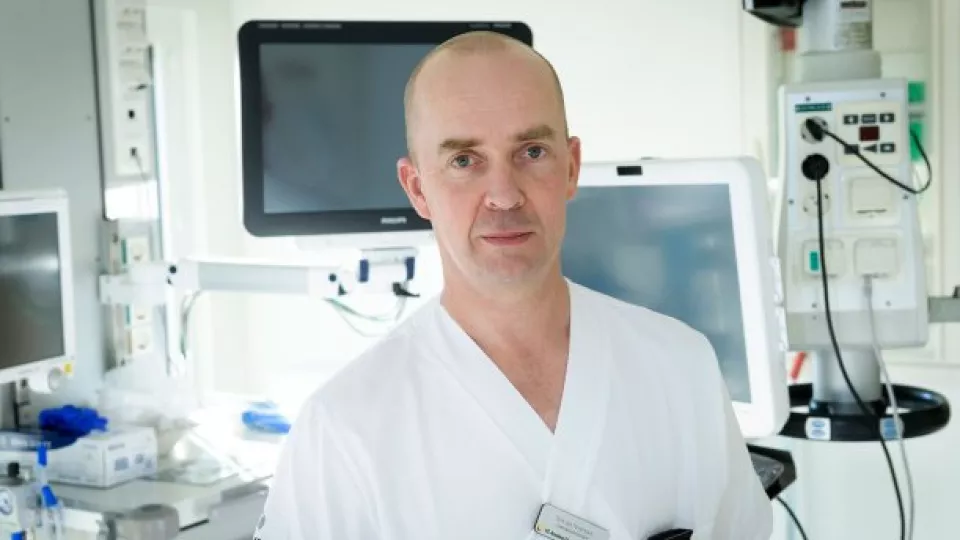Induced hypothermia, that is, cooling the body and brain down to 33 degrees, could be described as standard practice for treating cardiac arrest worldwide. The treatment is based on two clinical studies published in the New England Journal of Medicine in 2002, and is the only treatment which has shown positive signals for increased survival and reduced risk of permanent brain damage.
“The method of cooling the body down to 33 degrees is based on two relatively minor studies conducted almost 20 years ago. Since then, we have shown that it is equally effective to maintain a steady 36 degrees; however, our study in 2013 focused solely on comparing two levels of controlled hypothermia, reaching as low as 33 degrees or just below normal temperature, 36”, says Niklas Nielsen.
Manipulating the body through induced hypothermia always involves risks, including infection, bleeding and cardiac arrhythmias. And although the treatment could be referred to as standard practice, there is uncertainty regarding its effectiveness. This is reflected in the fact that the extent to which the treatment is used and the cooling temperature varies from country to country, region to region, hospital to hospital, explains Niklas Nielsen.
“We are now trying to get to the bottom of the most important question: Does cooling after a cardiac arrest really work? We will study whether cooling should be included in the treatment or not”, says Niklas Nielsen.
It is a randomised study, in which half of the 1 900 patients who arrive at the emergency cardiac clinic will receive hypothermia therapy and the other half will receive the usual treatment, i.e. intensive care without cooling, but whose potential fever will be treated.
The study will begin in mid-November in Sweden, and at a few hospitals in the UK, the Czech Republic and Italy. These are frontline hospitals which will test their protocol – i.e. making sure that all data entry is performed according to plan, that the infrastructure is working, etc. – after which more hospitals will be added gradually. The plan is that the majority of the 70 hospitals included in the study will begin their testing during the first quarter of 2018.
“We are a large multidisciplinary research team, and we hope that the study will not only answer the question of whether or not cooling works, but also provide more knowledge of cardiac arrest patients in general. The key areas include finding methods for assessing the risk of brain injury and, through careful follow-up, identifying which patients are in need of rehabilitation or other measures to help them return to a normal life after experiencing a cardiac arrest”, concludes Niklas Nielsen.
Contact:
Niklas Nielsen, associate professor and researcher at the Centre for Cardiac Arrest at Lund University, medical consultant at the general hospital in Helsingborg
+46 (0)708 899770
niklas [dot] nielsen [at] med [dot] lu [dot] se
Facts TTM2:
www.ttm2trial.org
Legal sponsor and lead authority: Region Skåne, Skånevård Sund. Lead academic authority: Lund University.
Chief investigator: Niklas Nielsen, associate professor, medical consultant.
Research team: Centre for Cardiac Arrest at Lund University
The research team is composed of neurologists, occupational therapists, physiotherapists, cardiologists, anaesthesiologists/intensive care physicians, emergency physicians
Participating countries: Sweden, Norway, Denmark, Germany, UK, Czech Republic, Austria, Switzerland, France, Italy, Belgium, Netherlands, Australia, New Zealand, USA
Hospitals in Sweden: General Hospital in Helsingborg, Skåne University Hospital in Lund and Malmö, Regional Hospital in Halmstad, Sahlgrenska University Hospital in Gothenburg, South General Hospital and St Göran Hospital in Stockholm, Uppsala University Hospital, Norra Älvsborg County Hospital in Trollhättan/Vänersborg, General Hospital in Karlstad, Linköping University Hospital, Örebro University Hospital, Skaraborg Hospital in Skövde
Approximately 70 hospitals worldwide. Examples of international hospitals participating in the study: Germany: Charite Berlin, the university hospitals in Cologne and Hamburg, UK: St Barts London, Cambridge University Hospital, USA: Mayo Clinic, Stanford University, Columbia University Hospital, Italy: St Martino, Genoa, Czech Republic: University Hospital in Prague, France: Cochin and Lariboisiere in Paris, Belgium: University Hospital in Brussels, Switzerland: Lausanne and St Gallen.
